
Humankind has always used caves, not only as shelters, but as places of worship, of burial, as water sources, hiding places or even more simply as a stable for their animals. Faint traces remain of the occupation of caves in eastern Friuli, which new studies have been able interpret in an unprecedented fashion. This is the case of the Riparo (or rock-shelter) of Biarzo, the site with the oldest documented prehistoric presence and the best studied of those in the Natisone Valleys, or that of the Velika Jama and the Ciondar des Paganis, caves used in the third millennium BC, which are compared with what has been found in the area of the Classical Karst. This new deciphering of data and its disclosure in an exhibition is also an opportunity to talk about accessibility and eco-sustainability, fundamental themes of contemporary museology
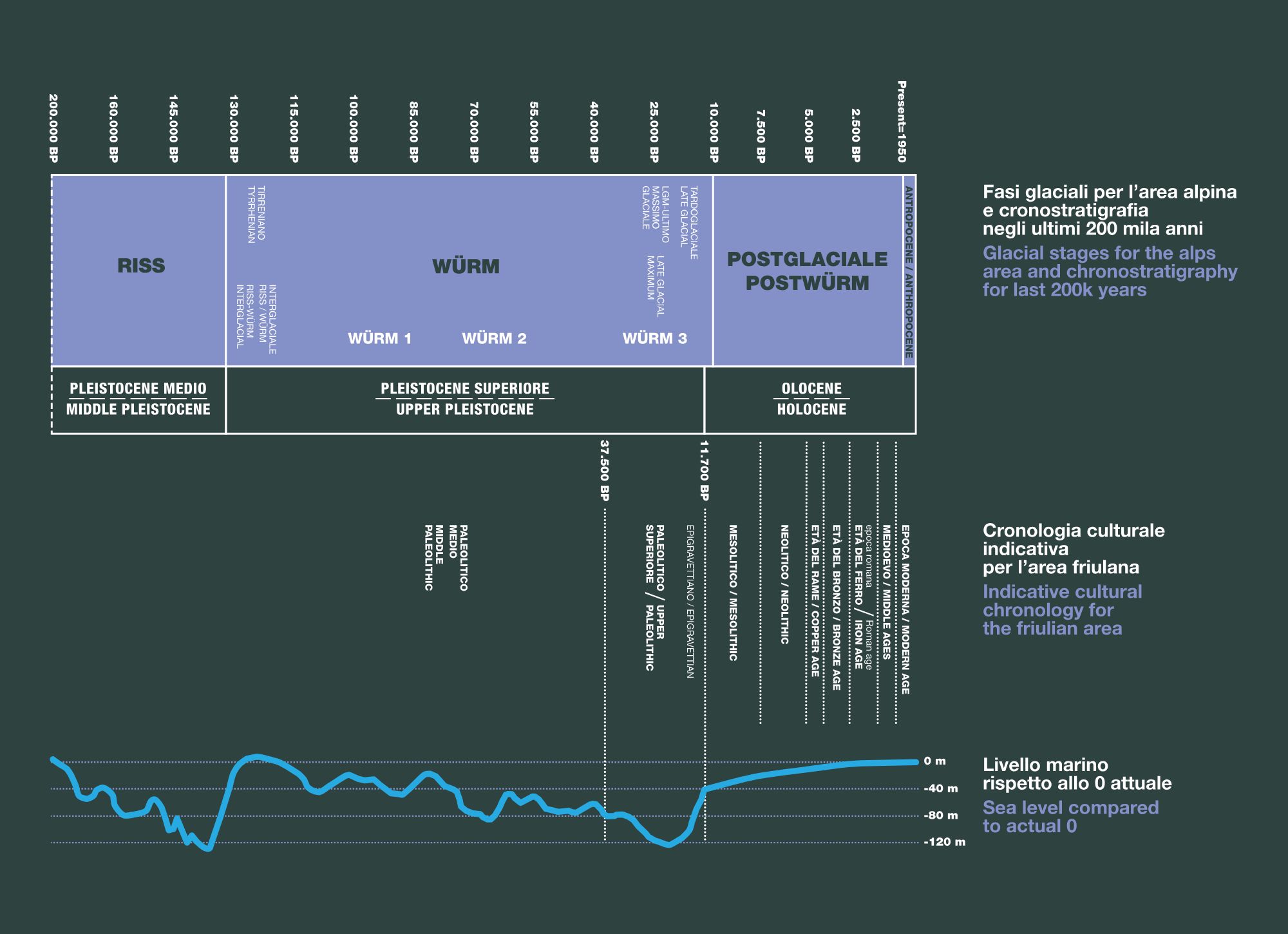
- DISCOVERING THE UNDERGROUND WORLD IN FRIULI
Speleology in Friuli can boast almost 150 years of history. Alter the initial and occasionai explorations, in 1883 the first speleological group in Italy was created in Udine, as a section of the Friulian Alpine Society: the Friulian Speleological and Hydrological Circle. Achille Tellini was elected as its first president, but personalities of great scientific weight passed through the ranks of the association, such as Giovanni Nallino (1836-1906), Francesco Musoni (1864-1926), Giovanni Battista De Gasperi (1892-1916), Giuseppe Feruglio (1882-1918), Egidio Feruglio (1897-1954), Michele Gortani (1883-1966) and Ardito Desio (1897-2001). At the same time there was also an interest in the caves' archaeological deposits, especially involving evidence referring to Prehistory, a scientific discipline that began in Italy, along with the creation of the C.A.I., the Italian Alpine Club, in the mid-19th century.
- THE REDISCOVERY OF THE PREHISTORIC DEPOSIT OF THE BIARZO ROCK SHELTER
Excavation campaigns were carried out between 1982 and 1984, under the direction of the University of Ferrara and the Friulian Museum of Natural History. These returned signs of occupancy dating back 13,000 years. In recent years, the Biarzo rock shelter has been the focus of several studies that have allowed an ever more complete picture of the settlement dynamics, cultural context and environment to be obtained with respect to the various phases of occupation. The data that have emerged so far from the multidisciplinary study show a certain continuity in the subsistence strategies employed, especially in the selection of prey hunted and in the settlement dynamics of the most ancient phases, between the Epigravettian and the Mesolithic. This continuity could be linked to the stability of the environment in the area of the Natisone valley between the late Pleistocene and the ancient Holocene. The position of Biarzo rock shelter makes it an ideai site as a base camp from which to move between medium altitudes and the plain for the exploitation of a wide variety of ecological niches.
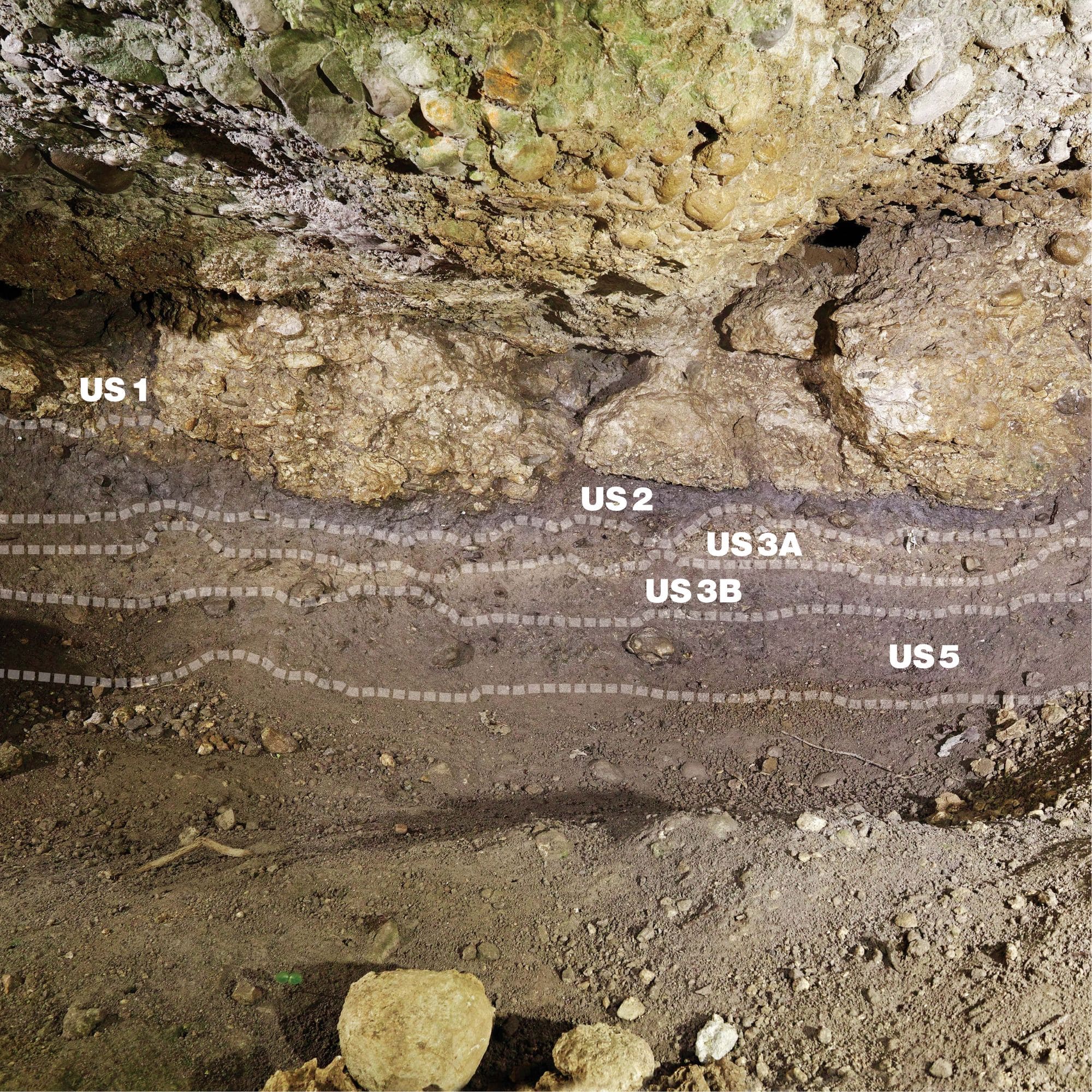
Stratigraphic units identified during the excavation conducted at the Riparo di Biarzo (from bottom to top): US5 refers to the recent Epigravettian, US 4 (not always present) and 3B refer to the early Mesolithic, US 3A to the recent Mesolithic, US2 to the Neolithic and the Bronze Age, finally US1 is a sterile unit.
Scheme of the geochronological scale, stratigraphic units, archaeological phases and the most representative finds documented in the Riparo di Biarzo. From bottom to top: US5 refers to the recent Epigravettian, US 4 (not always present) and 3B refer to the early Mesolithic, US 3A to the recent Mesolithic, US2 to the Neolithic and the Bronze Age, finally US1 is a sterile unit.
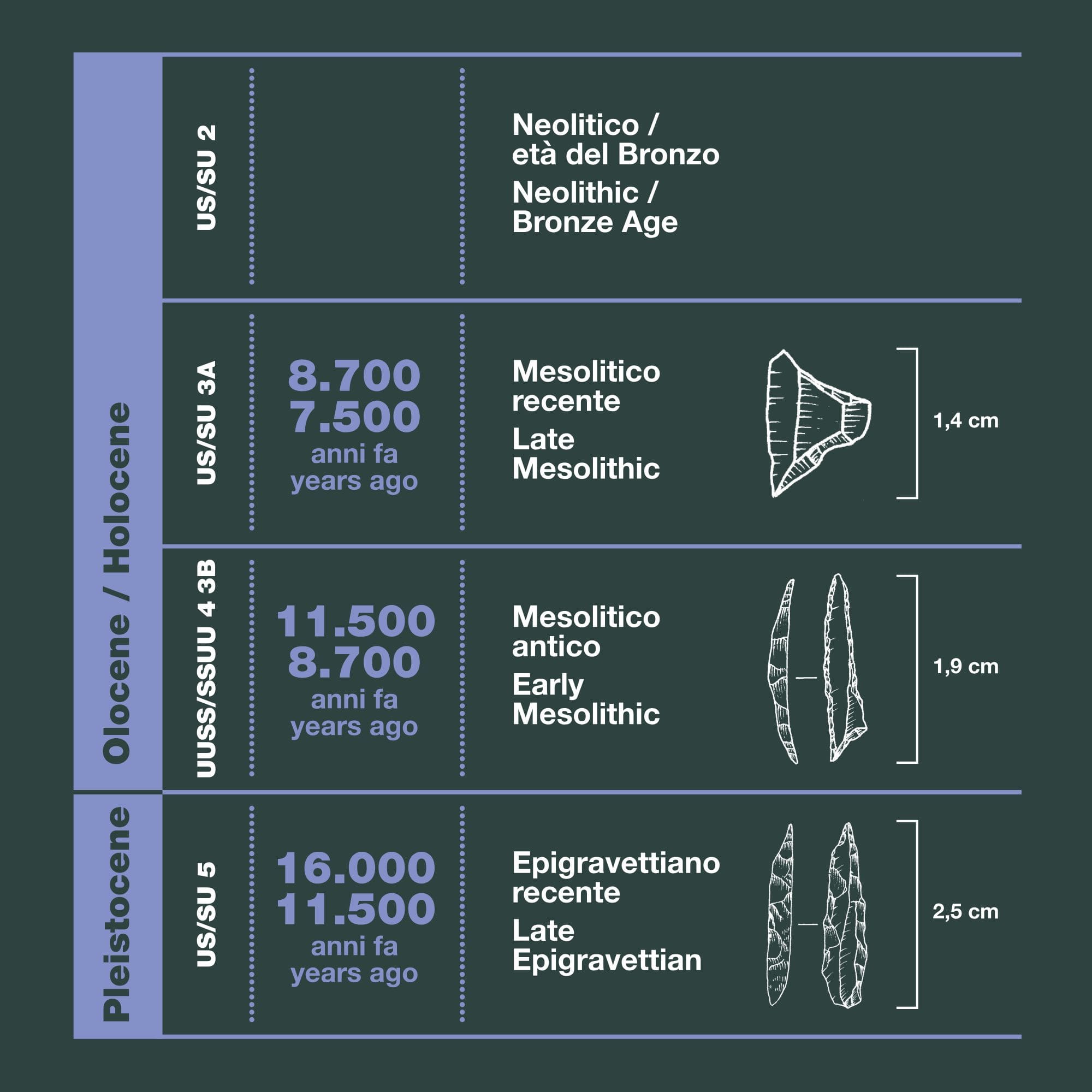
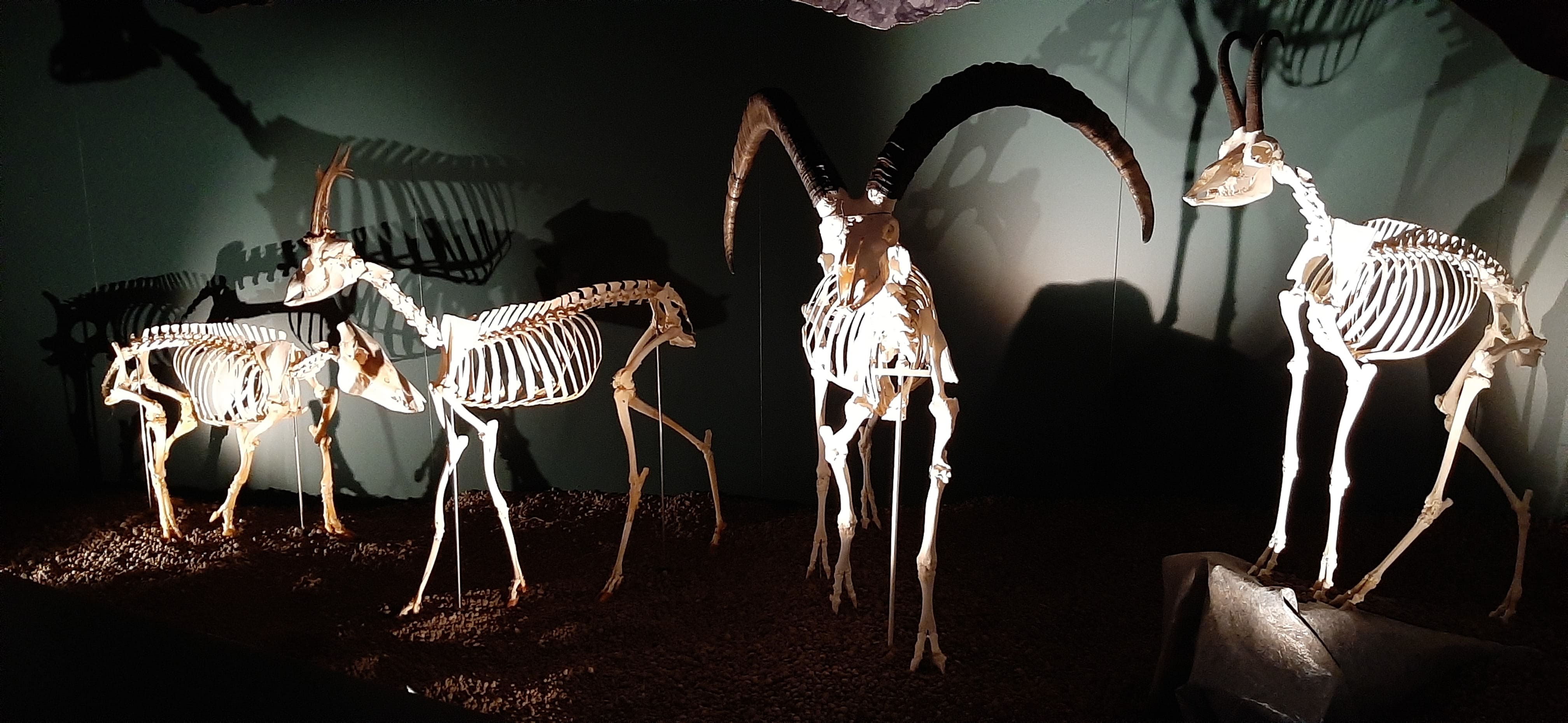
- THE UNDERGROUND FAUNA
- A DIVERSIFIED ECONOMIC SYSTEM IN THE NATISONE VALLEYS OF THE THIRD MILLENNIUM BC
As a result of its ease of access, good microclimate and an abundance of water, this area had a geological setting and morphology favourable to its use in prehistory. The valleys, in fact, show various levels of comfortable river terraces lower down, while uphill it narrows, with more compact rocks to form gorges overlooked by shelters and caves. Among the hundreds of caves that open up in this area, according to the research conducted so far, only 19 seem to have been occupied in a pre-protohistoric era, according to the different settlement typologies identified. Starting from the third millennium BC there is an increase in the the more internal evidence of occupation of the more on of mit areas, which sectors of the valley, in the summit areas, which provide views across the plain below and which in turn are identifiable from low/ ground. The reasons for this can be traced back to hunting, pastoral activities, haymaking, the search for raw materials, smelting activities or even new funeral rituals.
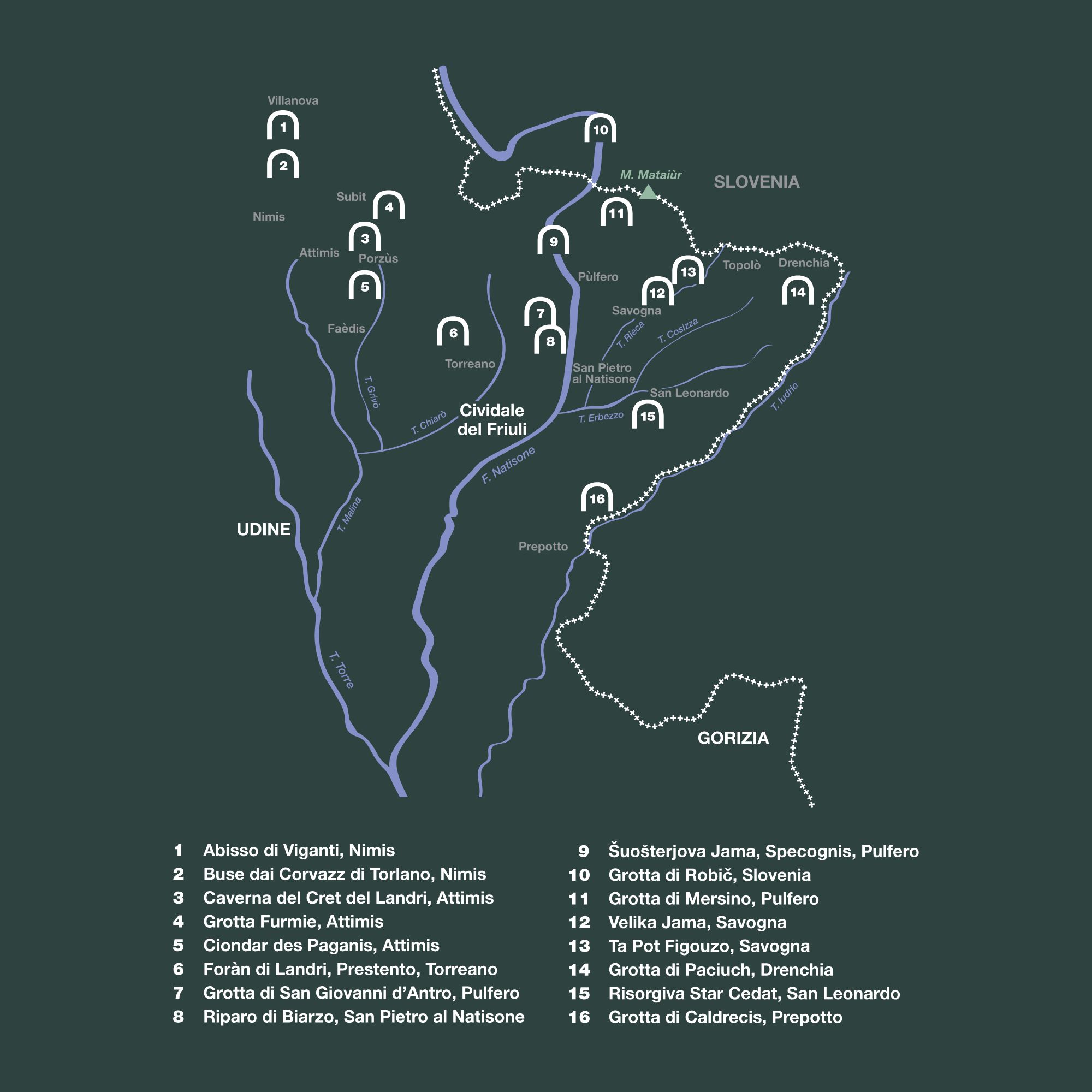

 IT
IT  DE
DE  FR
FR  FU
FU